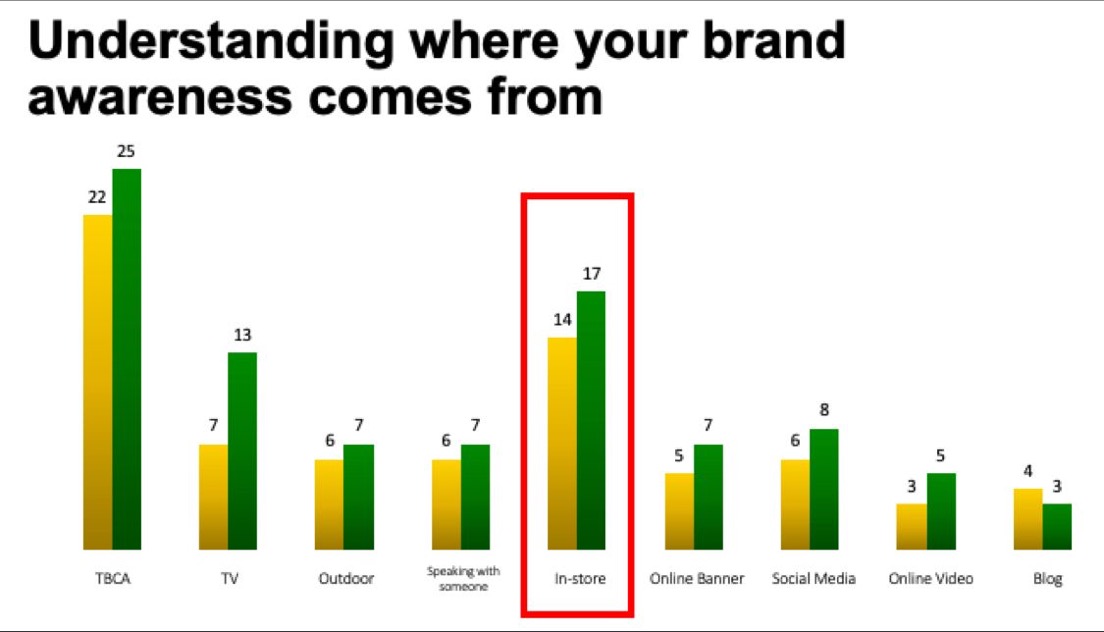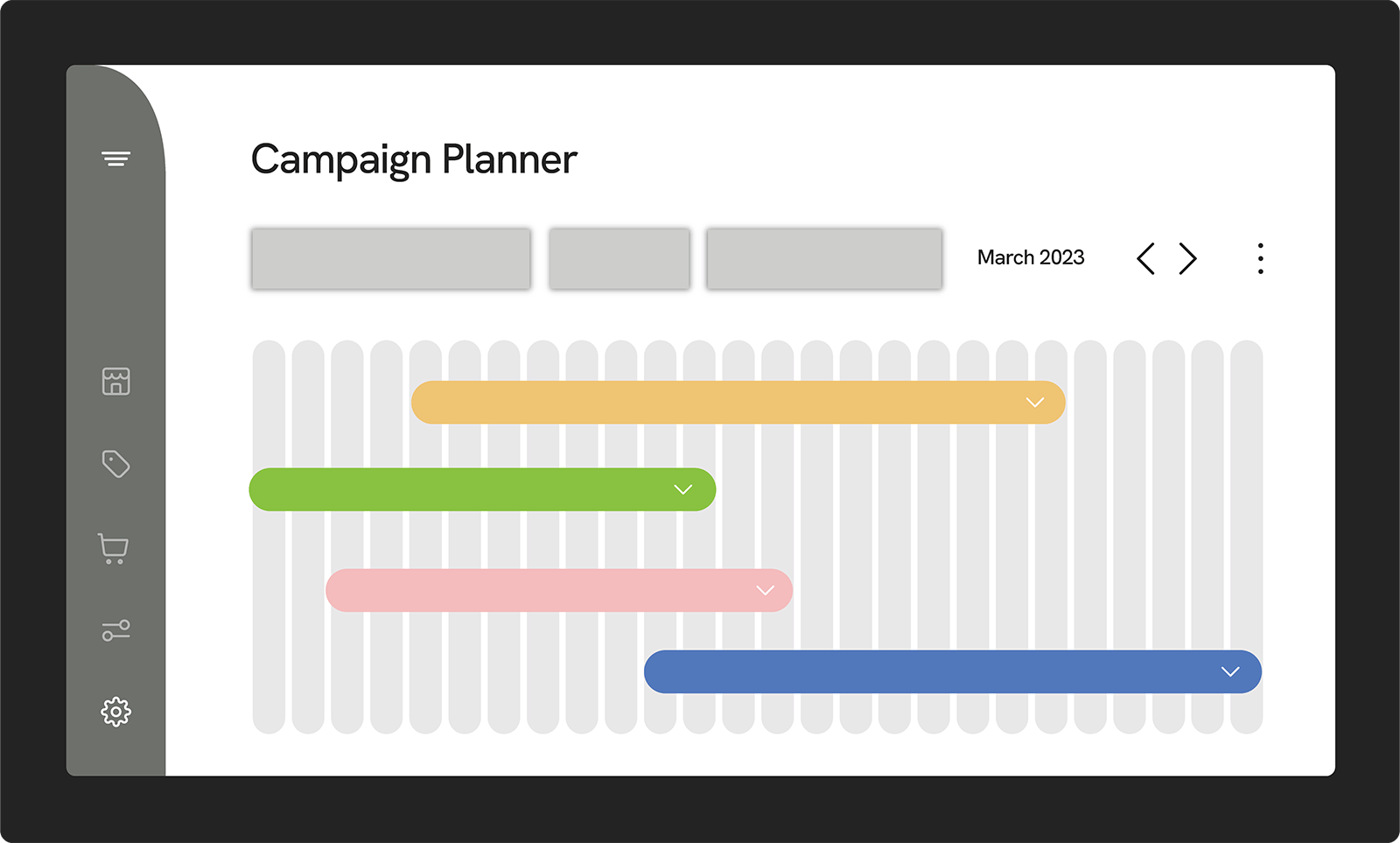Ensure Brand Consistency in Brick-and-Mortar Retail


A physical retail operation is a hive of activity. It combines shopper psychology with store layout design, merchandising strategy, in-store promotions and trade partnerships to create an enjoyable shopping experience. Amidst all this, your retail stores must be instantly recognisable as yours. So, how can you ensure brand consistency in brick-and-mortar retail alongside other challenges?
Brand consistency in brick-and-mortar retail requires a cohesive strategy for marketing and merchandising, a clear plan that all parties can view, and constant 2-way communication between head office and store teams. Merchandising planning is critical to ensure products are in-store and displayed in the correct way. Meanwhile, communication is required to ensure that plans are executed effectively in-store.
Ensuring brand consistency across multiple physical retail environments is one of the most complex challenges in the industry, but it yields significant benefits. So, here we’ll break down exactly how you can achieve it.
When a shopper steps into your store, they should instantly recognise where they are. Whether they step into a local city-centre outlet or a suburban megastore, your customers can tell it is your store.
Despite often being considered a sales channel, recent research from Black Door Media highlighted that in-store marketing is the second greatest source of brand awareness for retailers and brands – even more than TV! Needless to say, promoting products in-store provides a significant impact on both long-and-short form advertising effectiveness.

Brand consistency ensures alignment across all of your organisation’s communications and actions so customers recognise you. Every digital or physical touchpoint is an opportunity to make an impression, including advertising campaigns, marketing communications, product development and customer service. Brands create guidelines for visual identity, tone of voice, and employee behaviours that ensure everyone is aligned across the organisation.
You can read our recent article about the benefits, challenges and implementation strategies for ensuring brand consistency across the organisation here.
Within a store environment, brand consistency needs to run through everything. From the design of the stores and the merchandising layout to the signage and the staff interactions. Ensuring your stores deliver a consistent customer experience encourages customers to buy from you.
So, how can we achieve this within our physical retail operations?
Whether you have 10 stores or 10,000 stores, the rules for maintaining consistency are the same. Here are strategies to ensure brand consistency in brick-and-mortar retail.
Before opening a new store, you will have designed the customer’s journey throughout it. Undoubtedly, experts designed the flow through your store to ensure it’s aligned with your other stores. However, every store is slightly different. And, after several years, your store designs will change. In addition, store refits may dictate a change in layout. All of this is to say that no two stores are alike.

Therefore, ensuring consistency between them is incredibly challenging. It’s easy to distribute the same materials to every location with the same instructions, but do you know how they will look once implemented? Are you confident they’ll be put up accurately every time?
These are just some of the challenges that retailers face. You can read more in this article.
While many retailers conduct annual store audits to gain visibility of their stores, these are obsolete as soon as you complete them.
To ensure consistency across all of your merchandising, marketing and designs, retailers must have dynamic store profiles. Your store profiles need to be constantly updated and maintained to provide head office teams with accurate information to build marketing campaigns. This will let them accurately assign materials to each store and resolve any inconsistencies between stores.
With frequent merchandising and marketing changeovers, a clear campaign management strategy is critical.

Let’s consider planning for your Christmas Promotions campaign that runs between October and December. The changeovers during this season are relentless; from Halloween to Thanks Giving, Black Friday to Christmas and Boxing Day, it’s a constant revolving door of promotions.
Your campaign needs to simultaneously deploy the right materials in every store to avoid customer confusion and maximise promotions.
You need to have the campaigns designed, created and ready to go. You need the materials on hand in stores before they get deployed. And you need clear instructions so all store teams know how to implement it.
If any of these stages aren’t executed flawlessly, you will miss out on significant revenue opportunities.
Using collaborative campaign management software should engage all stakeholders and provide visibility of key tasks, responsibilities and deadlines. This will ensure the right people complete critical tasks on time. If you build in enough time, store teams can check materials before they need to be installed and report back any issues.
Some teams may use spreadsheets. If you do use spreadsheets, we recommend using cloud-based versions with traceability and collaborative working. Otherwise, disparate teams will be easily lost in a sea of different spreadsheet variants for multiple campaigns.
However, even with cloud-based spreadsheets, you cannot personalise your instructions to different teams. This will reintroduce confusion as you distribute materials and instructions to every store, increasing the risk of it going wrong.
With the best-laid plans, marketers have little control over the implementation of their campaigns.
Many organisations instruct regional managers to check campaign implementation as they visit stores in their area. However, this may not be timely enough. If marketing materials are implemented incorrectly, it could be days before the regional manager checks.
These inaccurate implementations can deliver a negative customer experience and impact revenues too. In 2017, we worked with a Supermarket Retailer on this problem. In some cases, inaccurate implementations created health and safety hazards because store teams were putting up banners they didn’t have space for.
Additionally, given that aligned merchandising and marketing can provide a sales uplift of 180%, 2 days of inaccurate implementation can greatly impact your campaign’s success. We talk more about measuring in-store marketing effectiveness in this article.
Fortunately, many of these issues can be resolved by creating 2-way communication between head office and store teams.
By providing localised marketing collateral and instructions to stores, you can avoid confusion in implementation. This increases the chance they will get it right first time.
Additionally, you should include a feedback form and request a photo when providing those instructions. Making it easy for store teams to feedback directly, rather than going through countless emails, can reduce them trying to figure it out themselves. If you ask for photographic evidence, you can check how it looks in store for yourself. Introducing this simple change increased Paddy Power’s display compliance from 42% to 100% in all 600 of their stores.
You can learn more about display compliance, what it is and how to measure it in this article.
Many retailers and brands struggle with spreadsheets while ruing the lack of consistency of their in-store campaigns.
Thankfully, Colateral has an easier way to manage marketing materials in physical spaces.

Our dynamic store profiling tool ensures marketers are always equipped with the latest information within their stores. It includes the fixtures and fittings available in each store, including the campaigns that are currently running. These can be maintained thanks to real-time communication with shop floor teams.
In addition, issuing the right materials to stores has never been simpler. Marketers can build their campaigns, issue briefs to designers, and allocate the campaign to the right stores. Colateral automatically allocates the correct quantities to each location. Each store only receives the materials they need, with only the instructions for their materials, so they get it right every time.
Finally, your head office teams issue questionnaires to stores with every campaign. Store teams complete these after installing campaign materials, reporting issues, and attaching photos as evidence. Marketers receive notifications when issues occur so you can resolve them quickly.
These are just some of the ways Colateral helps marketers create more consistent in-store marketing campaigns across brick-and-mortar retail stores.
We also help retailers personalise and localise their in-store marketing campaigns. Check out this article to learn how to implement localised in-store marketing campaigns.
Want to learn more techniques, tips and advice to improve your in-store marketing campaigns? Sign up for our newsletter.
 Thought Leadership
Thought Leadership
Nothing captures someone's attention more than a message tailored specifically to them. And shoppers now...
 Thought Leadership
Thought Leadership
Around in-store marketing, there is a constant debate about which is more important: Where your...